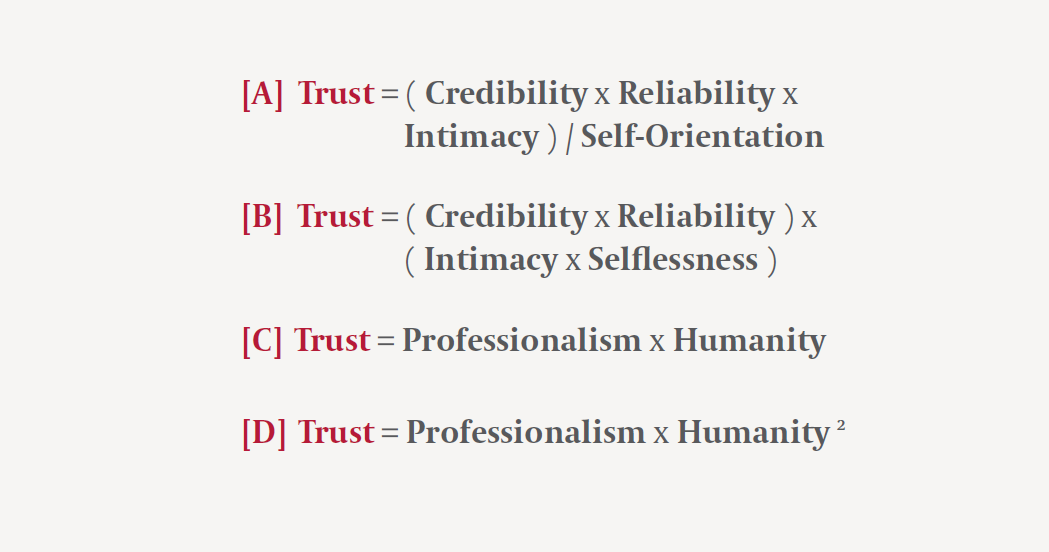Trust is the glue of life. It’s the most essential ingredient in effective communication. It’s the foundational principle that holds all relationships.
Stephen Covey
Few would dispute that trust is the most important asset at a leader’s disposal. A person can hands-down be the smartest individual in an organization, but if they are not trusted, they won’t go very far. This is especially true when leading into the ambiguous future. Never has assuring and demonstrating trust been more important than when we don’t know for sure where we are going. We allow trusted leaders to take us into the dark. As we have seen repeatedly over the last incredibly challenging year and a half, trust is the tie that binds, and to establish it leaders must be willing to reach out to and relate to others more openly and with humility. Now, as we begin to move out of the pandemic and back into a world of more physical and immediate human connection and interaction, it is crucial that we learn from what the recent past has taught us about trust, that we don’t slip back into some automaton version of our less vulnerable, less transparent selves.
The risk of this happening seems particularly keen at present. After 18 months of working from home, we find ourselves in the middle of a great shift that is gradually redefining how and why we do our jobs. During COVID, organizational psychologist Adam Grant recently explained in The Wall Street Journal, “many people experienced new forms of flexibility, and the taste of freedom left us hungry for more.” Leaders need to recognize this, to listen carefully to what workers are saying, to demonstrate their relatability and trustworthiness at this pivotal time. More than ever, they need to refrain from acting impulsively from older, autocratic playbooks or from a desire to get back to “business as usual.” Otherwise, they could risk destroying the trust that has been carefully built during this time.
Revising the Trust Equation
It therefore seems like a fitting time to sit back and consider what constitutes lasting trust today, to put the lens on how it is built and strengthened. Because trust is an amorphous concept (much like faith or hope), it can be helpful to try to encapsulate it more tangibly. To do this, we are revisiting the well-known “trust equation” which was originally published in 2000 in David Maister’s long-admired book, The Trusted Advisor. We have transformed the equation as follows:
Trust = Professionalism x Humanity 2
The original formula emphasized the idea that trust could be built by combining what one knows (credibility) with what one does and delivers (reliability) while creating a personal connection and mutual understanding (intimacy), all of which can be undone by how self-serving or self-motivated one appears to be. [A] But leaders today are being asked to demonstrate a great deal more on the personal side than they have ever needed to. They are increasingly being coached to appeal to others through their common humanity—through active empathy, humility and by showing vulnerability (by accepting that one doesn’t always have the answers, for instance). These are powerful and important signs of psychological safety that encourage others to be more vulnerable and trusting in turn. As renowned author and social worker Brené Brown has helped us see: “Staying vulnerable is a risk we have to take if we want to experience connection.” So, leaders’ more traditional business acumen must today be enhanced by this more humanistic approach to gain their teams’ and organizations’ emotional commitment.
We revised the equation to show this more clearly, first by simplifying the equation onto one line and bringing the opposite of self-orientation, selflessness, to the fore. [B] To simplify this still further into what we believe are the two essential components of trust now, we grouped credibility and reliability, relabeling them together as professionalism, and then we repurposed intimacy and selflessness as humanity. [C]
While closer to capturing the essence of how we create trust in business today, the reality is that the right or humanity side of the equation has gained influence of late, shaped by the collective experience of the COVID pandemic, by the higher sights younger generations entering the workplace have set for their leaders, and by expanding expectations for CEOs and other top business leaders to be more accessible and relatable. To account for this shift to the right side, we have amended the equation further to reflect what we believe is humanity’s exponential impact on trusted leadership at present. [D]

Rethinking How We Gain Trust
Leadership in the time of the pandemic has been very challenging. It is more based on trust and spoken approaches—approaches that were able to go unspoken in the past."
A CEO from our recent survey
Over the past few years, there has been steady momentum to groom leaders who are less transactional and more attuned to their capacities to reach their many and varied stakeholders and disparate organizational goals. In our own very recent study of almost 1000 CEOs, “It Starts With the CEO,” we heard repeatedly that, as one put it: “Leadership is increasingly about humanity, sharing imperfection, and being authentic and empathetic.” More than 80 percent of those we surveyed recognized that need to become more relational and connected to a wider group of stakeholders. They have been told and acknowledge, above all, that they need to become better listeners to engender trust across these groups. And they know that in order to deliver the varied short and longer-term organizational goals they require for success, they must first transform themselves to better meet the growing demand for the more relatable, inspirational and trusted leader who can actually bring those changes.
As for meeting the requirements on the professionalism side of our revised trust equation, the reality is that it is harder to be consistently credible and reliable in today's complex world. It is now much more difficult to predict the best way forward with certainty. Leaders must instead demonstrate keen openness to explore and consider alternative paths and to experiment and respond adaptively over time. To do this, they must cultivate the curiosity and vulnerability to expose themselves as continuous learners. All of this requires them to approach others, not from a rank above, but on the plane of common humanity, sharing their imperfections as well as their strengths. By reinforcing this level of trust, they can generate the inclusivity and cohesion needed to conceive the best collaborative, creative solutions upon which future enterprise success will depend.
Therefore, the human (right) side of the revised trust equation can help balance the losses that uncertainty and ambiguity build in on the left; stronger bonds of common humanity establish a safety net of trust for our more erratic, disruptive times. This must be built gradually, knit daily into both internal and external relationships and the organizational culture and fiber. As Brown says: “Trust is not built in big sweeping moments. It is built by tiny moments every day.” Trust is founded upon and fortified by the repetition of the real and the human.
The Gift that Keeps on Giving
By building truly human, open, and mutually vulnerable relationships with clients, peers, teams and employees, leaders become a better version of themselves over time. They share and learn in ways never before possible; they break open beyond the previous confines of their ego and self—their blind spots—to develop a wider perspective and gain the ability to see a world of previously hidden possibilities. As Leonard Cohen immortalized: “There is a crack in everything, that’s how the light gets in.”
It is, above all, the trust a leader builds with others and how they create those connections, that become the defining facets of truly great leadership. Opening oneself to learning how to better understand and reach others teaches how to know oneself even better; it’s a reinforcing, ongoing cycle of human energy and awareness. By giving, one receives. The resulting more observant, empathetic, and humble mindset generates truly impactful leadership time and time again.





